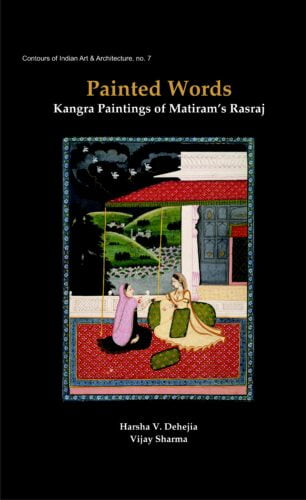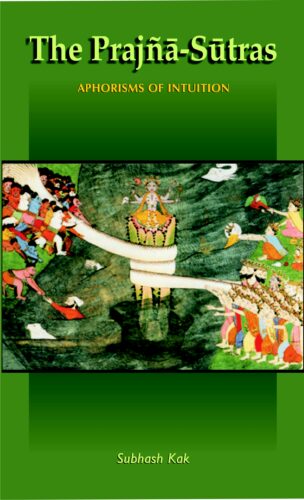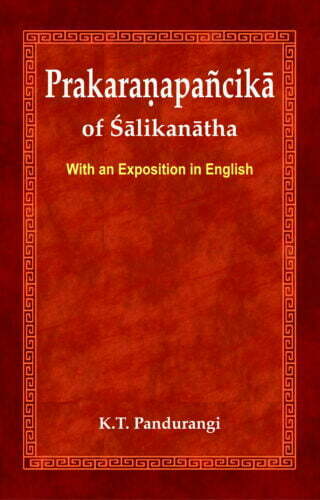Showing 61–70 of 122 results

This critical edition of Nitiprakasika, while unveiling Rajaniti and Dhanurvidya, compares it with the Vedic literature and a few medieval comparative texts on polity. It also discusses in detail the weapons and training on them, military organization, battle arrays, types of war, ethics of war, psychology and philosophy of Dhanurvidya among many other aspects.
The experiences and knowledge from our past are recorded in manuscripts which have been handed down to us over several thousand years. The Government of India, through the Department of Culture, took note of the importance of the vast tangible heritage and, in order to preserve and conserve as well as to make access to this wealth easy, established the National Mission for Manuscripts. In order to disseminate the knowledge content of manuscripts, the Mission has taken up several programmes such as lectures, seminars and workshops. The Mission has published the proceedings of the above-said programmes under the following series: Samrakshika (on conservation), Tattvabodha (comprises lectures based on some manuscripts delivered by eminent scholars), Samikshika (research-oriented papers as presented in the seminars), and Kritibodha (transcribed and edited text prepared at advance level manuscriptology workshops conducted by the NMM.
The National Mission for Manuscripts has taken up a project for publishing rare and unpublished manuscripts in three formats (a) Facsimile, (b) Critical edition (illustrated and single copy manuscript), and (c) Critical edition with annotation and translation. This new series has been named as Prakashika. Nitiprakashika critically edited by Dr Urmi Shah comes under this Prakashika series.
Nitiprakashika is a treatise delineating Nitishastra, i.e. Rajaniti and Dhanurvidya scripted by Sage Vaishampayana who learnt it from his guru Veda Vyasa and became the master of its Taittiriya branch, and revealed it to the King Janamejaya.
This critical edition makes a detailed study of Nitisastra and compares it with the Vedic literature, Dharmasastras, Kautilyas Arthasastra, Ramayana, Mahabharata, Dhanurveda Samhitas, Kamandaka Nitisara, Sukra-Nitisara and a few medieval comparative texts on polity along with some regional works on Rajaniti. It also discusses in detail the weapons and training on them, military organization, battle arrays, types of war, ethics of war, psychology and philosophy of Dhanurvidya, and the critical text of Nitisastra with Sitaramas commentary Tattvavivrti in Sanskrit with English translation.
This high-value academic work should entice all who are desirous of knowing about the ancient philosophy on war, warfare and polity, and serve them as a referral book on Rajaniti and Dhanurvidya.
Bhartrhari’s three unique compositions – Nitisatakam, Srngarasatakam and Vairagyasatakam – have been relevant for the last 2,000 years and above for their exclusively terse and epigrammatic character, and universally applicable teachings. The Nitisataka, although succinct and concise, is pregnant with the perpetual and everlasting doctrines, resulted from diverse experiences of life.
Although it has hundreds of printed editions available with commentaries and translations published in many parts of the globe, still this edition has been prepared along with recently discovered Kasmiri Sarada text, supplemented by critical notes on variant readings found in a Sarada manuscript, for the very first time in last 400 years, i.e. ever since the printing editions came into existence.
Most commonly accepted verses of the Nitisataka have been included in this edition, making a total of 111 verses, which is enriched with authentic translation and purports in Hindi and English.

The book in its attempt to study various aspects of the Vedas presents a detailed study of Indian traditionalists on the Vedic literature from Veda VyÀsa to SÀyaõa and other famous ÀcÀryas. While exploring all important commentaries on the Vedas it brings under spotlight the leading Western scholars and modern Indian thinkers and commentators.
With elaborate notes on legends of the Vedas, the book attempts to study various aspects of the Vedas. It presents a detailed study of Indian traditionalists on the Vedic literature, beginning from Veda Vyasa to Sayana and other acaryas including modern saint-scholars. It also views researches of the Western scholars and historians who have critically studied various aspects of the Vedic corpus. It conducts an in-depth exploration of the commentaries on the Vedas, focusing on noted traditional Vedic commentators like Yaska, Jaimini, Kumarila Bhatta, Sayana and Mahidhara as also the modern Indian commentators including Swami Dayananda, S.D. Satavalekar, Sri Aurobindo, Devi Chand, Sriram Sharma and the Western commentators like H.H. Wilson, F. Max Müller, R. Roth, A. Weber, W.D. Whitney, A.B. Keith, and R.T.H. Griffith.
The volume deliberates on definition of the Vedas, division of the Vedas and various shakhas of the five Samhitas as well as a list of Samhitas, Brahmanas, Aranyaka and Upanishad that are extant. It delves into details of the Rigvedic Mandalas and the Yajurveda, Samaveda and Atharvaveda with reference to their subject matter, divisions and even their cultural value. It also examines the phenomenon of oral tradition, especially in conveying the Vedas and secret of preserving the Vedas – Vedic chanting. It has numerous illustrations that include maps, charts and pictures.

Matiram’s sonorous poetry embellished by Purkhu’s sensuous imagery, transport us into the rarefied realm of the Rasraj, where romance interwoven with poignancy, bring alive the emotion-laden shringara rasa. Both lyrics and imagery have been seemlessly sculpted into visual poetry.
No celebration of ritikavya can be complete until we have enjoyed the sonorous poetry of Matiram and the sensuous images of Purkhu.
With well sculpted words and lyrical rhythms Matiram takes us into the rarefied world of the nayak and the nayika, their amorous exchanges, the sensuality of loving glances, the charged moments of romantic feelings, the heart throb of belonging, the poignancy of longing and above all the fulfilment of desire.
Line by line and doha after doha, Matiram leads us into the emotionally charged world of shringararasa and for those of us who are chastened by harishringara we go from one level to another till we hear the flute of Krishna.
And when we find that these sonorous words of Matiram have been brought alive by none other than Purkhu and his school of painting under the patronage of Sansar Chand of Kangra our joy is doubled and Matiram’s words become visual poetry.
In the hands of Purkhu words become lines, emotions take on a colour and desire becomes palpable through the magic of his kalam.

This volume thus provides the psychological context and the relevance of studies of yoga, based on Patanjalis Yogasutra, for advancing the existing psychological knowledge. Yoga psychology provides the foundation for Indian psychology, an emerging discipline rooted in classical Indian tradition, and enables one to experience self-actualization in life.
Patanjalis Yogasutra: A Psychological Study is an attempt at an English translation of Patanjalis Yogasutra with commentary rendered in current psychological idiom. It features an extensive Introduction to the context and attempts to draw out conclusions on the implications of yoga theory and practices to current psychological knowledge.
Yoga paradigm goes well beyond what is currently in vogue and provides a more fruitful model for studying and understanding human nature, both hidden and manifest. This volume thus provides the psychological context and the relevance of studies of yoga for advancing the existing psychological knowledge. Yoga psychology provides the foundation for Indian psychology, an emerging discipline, rooted in classical Indian tradition.
According to Indian psychology, the person is a unique composite of body, mind and consciousness, making a qualitative distinction between mind and consciousness. Self-actualization, the ultimate aim of a person, is realized by cultivating consciousness as-such, resulting in a kind of psycho-spiritual symbiosis, enabling a person to experience an all-around transformation.

A unique pedagogical method of teaching of Advaita is presented in the Sanskrit trans-creation of Nishcaladasas Vicharasagara and its tippani by Pitambar, by Vasudeva Brahmendra Sarasvati, depending on the need of different types of seekers uttama, madhyama and kanishtha adhikaris simplifying the teaching and learning of Advaita even for laymen.
This book is a critical study of the Sanskrit trans-creation of Vicharasagara by Vasudeva Brahmendra Sarasvati of Nishcaladasa in one of the dialects of Hindi and its tippani by Pitambar, again in the same dialect, imparting a unique teaching technique of Advaita to different types of aspirants. The book thus unfolds the teaching of Advaita depending on the need of different types of seekers uttama, madhyama and kanishtha adhikaris. The volume focuses on two layers of concerns: first, of the appropriate modifications made by the trans-creator using simple Sanskrit and second, in the dialogue between the guru and the different adhikaris.
This critical study introduces us to: (i) the life and works of Nishcaladasa, Pitambar and Vasudeva Brahmendra; (ii) emergence of adhikari-based pedagogy system; and (iii) the employment of pedagogical tools by the guru, depending upon the character and needs of the seeker. The related questions and discussions found in different tarangas of Vicarasagara are pooled in and presented in a cohesive manner to arrive at the core of Nishcaladasas work. It also delves deep into topics such as meditation and its efficacy as a means to gradual liberation, and the nature of liberation.
The book, therefore, introduces the well-defined concepts of Vedanta in a simple pedagogical way as a dialogue between the preceptor and the student, helping even a layman to understand the nuances of Advaita, otherwise a hard subject to digest and grasp.

The author takes a1 critical look at some of the hitherto-unnoticed niceties of Banabhattas Harsacaritam, the Raghuvamsam, Abhijnana-Sakuntalam and other classical Sanskrit plays, against the backdrop of Hemadri and Ranganathas commentaries.
How far has the poetic style of the Vedas influenced the later Sanskrit literature, specially the authors of Brahmanas, Upanishads, and even lexicons? How far do the Dharmashastras, particularly in terms of their value concepts, manifest borrowings from the Ramayana and the Mahabharata? Or, again, how do Dharmashastras view the juridical concepts, like nyasa (deposit) and witness? How, and what for, have Valmiki, Kalidasa, and other classical poets/playwrights used astronomical symbology like, for instance, the phenomenon of Moon-Rohini association, in their writings? How is Professor H.D. Velankars contribution to Vedic Indology, specially Rg-Vedic interpretations, unique in its own right? An eminent Sanskritist, Dr. Moghe addresses these and other Indology-related questions, drawing on his highly specialized studies of Dharmashastras, Purva-Mimamsa philosophy, the Ramayana, the Mahabharata, literary classics and dramaturgic texts. In this composition of 12 writings, of varying lengths, the author discovers fresh linkages between Dharmashastras and Indias foremost epics, highlighting how both the Mahabharata and the Ramayanas ethical/social/legal values found almost universal acceptance with the writers of Dharmasastras, either in their unaltered form or with certain modifications. Among other thematic specificities, A Peep at Indology takes a critical look at some of the hitherto-unnoticed niceties of Banbhattas Harshacaritam, Kalidasas Raghuvamsham and Abhijnana Shakuntalam, and other classical Sanskrit plays against the backdrop of Hemadri and Ranganathas well-known commentaries. Invaluable to the scholars/researchers of Vedic Indology, Dharmashastra literature, and classical Sanskrit.

Professor Davane offers stimulating perspectives on varied themes covering classical Sanskrit literature, poetics, linguistics, history, mythology and legendary narratives including reinterpretations of the Vedic view of the moon, samudra, dreams, etc.
A distinguished scholar who has had a lifetime engagement with Sanskrit studies: ranging from the Vedic samhitas to contemporary literary criticism, Professor Davane here offers at once insightful, highly stimulating perspectives on diversely varied themes from classical Sanskrit literature, poetics, linguistics, dramaturgy, history, mythology and legendary narratives. And, these apart, brilliant reinterpretations of the Vedic views of the moon, samudra (ocean), dreams and deep sleep. Reviewing the gamut of kavya definitions and its scope, in terms of the literary genres it encompasses, the book critically examines, for the first time, Rajashekharas view of shabdaharana (verbal borrowings), kavisamayas (conventional poetic ideas) in Sahityashastra, and the progression of rasanishpatti in classical Sanskrit literature. It also seeks to gauge Mahamahopadhyaya Dr. P.V. Kanes contribution to Sanskrit poetics rather than his oft-appraised work on Dharmashastra. Dr. Davane marshals an astonishing mass of original literary sources to highlight the all-expansive influence of Kalidasas unparalleled Iyric: Meghaduta, on classical writings, the richness of Banabhattas utprekshas (poetic imagination), the emergence of Sarasvati as a pantheonic deity, and how Sita, the epitome of ideal womanhood, has been varyingly portrayed by over twenty Sanskrit playwrights. Also shown, in addition, are the legends/myths about Samudra-manthana, Amritamanthan, Rahu-Ketu, Udayana, and Dhanvantari, in their altogether fresh perspectives. This composition of Prof. Davanes writings is an essential reading for the scholars/researchers of Vedic and Classical Sanskrit literature.

The book presents a bridge between the cosmologies of Vedic knowledge and modern science. Commentaries are provided in 18 sutras on the nature of reality, language, art, mind, transformation and freedom. The sutras deal with abstract ideas, including aesthetics, love, war and suffering.
The Prajna Sutra presents a bridge between the cosmologies of Vedic knowledge and modern science. The ideas are presented as 18 sutras on the nature of reality, language, art, mind, transformation, and freedom on which explanatory commentaries are provided. The sutras tie together common symbols of the Vedic tradition and their deeper intuitions using contemporary vocabulary. The synthesis presented in the sutras is wide-ranging and it not only deals with abstract ideas but also with questions of meaning, aesthetics, love, war, and suffering. Although some consider only linguistic problems to be worthy of study, linguistic expressions ultimately are about things and they cannot properly address the mystery of consciousness. The sutras consider issues that go to the core of philosophy, namely the nature of reality and the relationship of the experiencing subject to it. They speak of the complementary domains of rationality and paradox that underlie ordinary experience. They explain how the mystery of consciousness relates not only to the individual’s cognitive capacity to know but also his ability to transform both himself and his environment.

The book of Purva-Mimamsa presents a detailed account of the Prabhakara system and explains the eight main issues in which the other systems of Indian philosophy do not agree with the Prabhakaras. Prabhakara thoughts are here undertaken in the light of modern developments in the areas of epistemology and linguistics.
Prakaranapancika of Salikanatha is an important text of Prabhakara Mimamsa. Salikanatha who is a direct disciple of Prabhakara made distinct contribution to Indian Epistemology and linguistics. The concepts of Svaprkashatva of cognition, Triputikarana formula, Akhyati theory of perceptual error are some of his important contributions in the area of epistemology, whereas anvitabhidhanavada, a theory of sentence meaning, the concept of Karya i.e., Niyoga as the import of injunction, the inclusion of Pauruseya statements under the inference are considered as his important contributions in the field of linguistics.
Nyaya and Bhafta Mimamsa strongly criticize all these concepts, but Vishistadvaita and Dvaita schools are a little friendly in some respects. We are sure that a study of Prakbhakara thought in the light of modern developments in the area of epistemology and linguistics will be fruitful.
| There are no products |